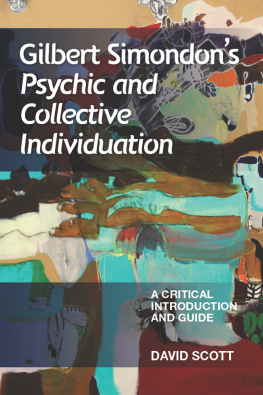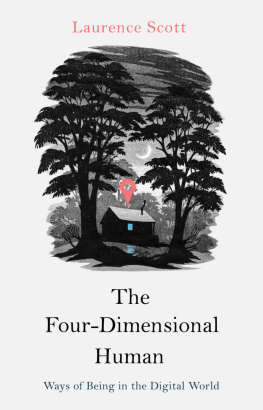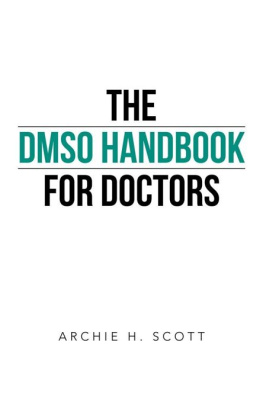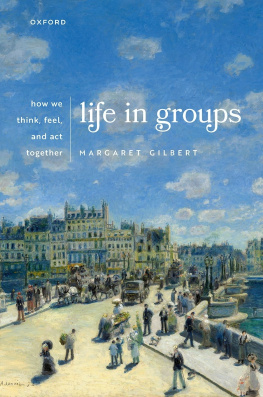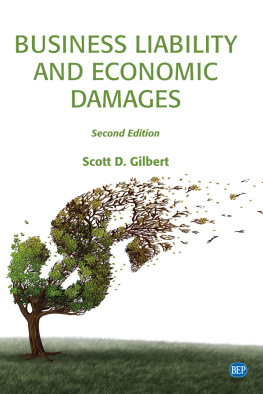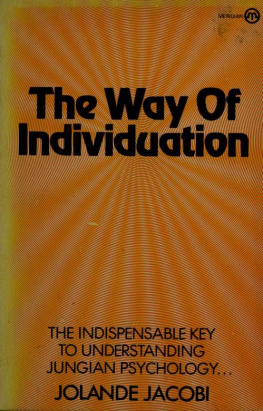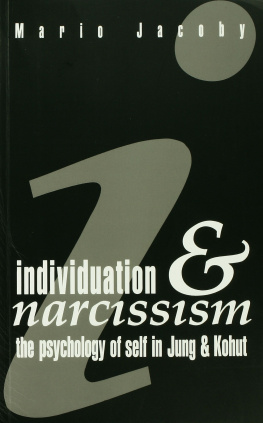Scott - Gilbert Simondons Psychic and Collective Individuation: A Critical Introduction and Guide
Here you can read online Scott - Gilbert Simondons Psychic and Collective Individuation: A Critical Introduction and Guide full text of the book (entire story) in english for free. Download pdf and epub, get meaning, cover and reviews about this ebook. City: Oxford, year: 2014, publisher: Edinburgh University Press;Oxford University Press, genre: Science. Description of the work, (preface) as well as reviews are available. Best literature library LitArk.com created for fans of good reading and offers a wide selection of genres:
Romance novel
Science fiction
Adventure
Detective
Science
History
Home and family
Prose
Art
Politics
Computer
Non-fiction
Religion
Business
Children
Humor
Choose a favorite category and find really read worthwhile books. Enjoy immersion in the world of imagination, feel the emotions of the characters or learn something new for yourself, make an fascinating discovery.
Gilbert Simondons Psychic and Collective Individuation: A Critical Introduction and Guide: summary, description and annotation
We offer to read an annotation, description, summary or preface (depends on what the author of the book "Gilbert Simondons Psychic and Collective Individuation: A Critical Introduction and Guide" wrote himself). If you haven't found the necessary information about the book — write in the comments, we will try to find it.
Gilbert Simondons Psychic and Collective Individuation: A Critical Introduction and Guide — read online for free the complete book (whole text) full work
Below is the text of the book, divided by pages. System saving the place of the last page read, allows you to conveniently read the book "Gilbert Simondons Psychic and Collective Individuation: A Critical Introduction and Guide" online for free, without having to search again every time where you left off. Put a bookmark, and you can go to the page where you finished reading at any time.
Font size:
Interval:
Bookmark:

For Lisa, your idea
Gilbert Simondons
Psychic and Collective
Individuation
A Critical Introduction
and Guide

DAVID SCOTT
EDINBURGH
University Press
David Scott, 2014
Edinburgh University Press Ltd
The Tun - Holyrood Road
12(2f) Jacksons Entry
Edinburgh EH8 8PJ
www.euppublishing.com
Typeset in 11/13pt Monotype Ehrhardt by
Servis Filmsetting Ltd, Stockport, Cheshire
and printed and bound in Great Britain by
CPI Group (UK) Ltd, Croydon CR0 4YY
A CIP record for this book is available from the British Library
ISBN 978 0 7486 5450 5 (hardback)
ISBN 978 0 7486 5451 2 (webready PDF)
ISBN 978 0 7486 5449 9 (paperback)
ISBN 978 0 7486 9574 4 (epub)
The right of David Scott to be identified as Author of this work has been asserted in accordance with the Copyright, Designs and Patents Act 1988, and the Copyright and Related Rights Regulations 2003 (SI No. 2498).
Contents
Acknowledgements
First I would like to acknowledge Carol MacDonald at Edinburgh University Press for all her assistance along the way, especially for how easy she made this process. I would like to thank Len Lawlor, my friend and role model, Robert Bernasconi, who made my philosophical path possible, and Tom Nenon for his inspired teaching. A special thanks is owed to Steve DeCaroli and Valerie Saint-Amand for their encouragement. I also would like to acknowledge Patricia and Ken Scott who prepared the way for my writing this book. And lastly and most importantly, I am especially grateful to my amazing wife for her tireless editing and proofreading skills (with jokes in the margins). Her editorial and philosophical skills are incomparable.
Abbreviations
| CI | Communication et information: cours et confrences (Communication and Information: courses and conferences) |
| FIP | Forme, Information, Potentiels (Form, Information, Potentials) |
| IGPB | Lindividu et sa gense physico-biologique (Individuation and its Physico-Biological Genesis) |
| II | Imagination et invention (19651966) (Imagination and Invention: 19651966) |
| IL | Lindividuation la lumire des notions de forme et dinformation (Individuation in Light of the Notions of Form and Information) |
| IPC | Lindividuation psychique et collective (Psychic and Collective Individuation) |
| MEOT | Du mode dexistence des objets techniques (Of the Mode of Existence of Technical Objects) |
Introduction
THE TEXT
Gilbert Simondons Lindividuation psychique et collective (Psychic and Collective Individuation, hereafter IPC) is an exceptional work that emerges out of the fog of chatter and philosophical loquacity with an impact that extends far beyond the number of readers who actually turn its pages. For too long Simondon has been the treasured secret of a significant, restricted, and admiring coterie most significantly among them Gilles Deleuze, Simondons steadfast advocate. But we can also count among the admirers of Simondons work Georges Canguilhem, Maurice Merleau-Ponty, Isabelle Stengers, and Bernard Stiegler.
If Simondon was known at all, it was largely on the merits of Du mode dexistence des objets techniques (Of the Mode of Existence of Technical Objects, hereafter MEOT), published in 1958. The stated goal of MEOT is a better knowledge of technical objects. Simondon argues that by better understanding our relationship with the technical objects fashioned to regulate our existence in the world, we create for ourselves the possibility of a new idea of what it means to be human, on the basis of a knowledge that correlates technology with human processes of existence. Human reality lives through technology. A machines structures function by fixing and crystallizing the human gesture. In fact, today MEOT continues to draw the most attention, particularly in Media Studies and Communication Studies researching the role technology plays in the development of culture across the disciplines. Still, we must remain cognizant that, while MEOT is undoubtedly important, having obvious far-reaching implications, Simondon himself saw it as only an adjunct to his shockingly brilliant primary doctoral thesis, Lindividuation la lumire des notionsde forme et dinformation (Individuation in Light of the Notions of Form and Information, hereafter IL). Let us say, MEOT concretely dramatizes the descriptive metaphysics and epistemology presented in his primary thesis. It would not be until 2005 that the full thesis would be published. Beside MEOT, only the first part of the main thesis, Lindividu et sa gense physico-biologique (Individuation and its Physico-Biological Genesis, hereafter IGPB) was published during Simondons lifetime in 1964. IPC is the second part of his main thesis; however, it was not published until 1989. Because IPC was intended by Simondon to be the final part of his main thesis, IL the convergence of the reflections of the two prior works, MEOT and IGPB I take it as bringing to full maturity his philosophical thought.
TWO SUPPOSITIONS: IT IS DIFFICULT AND IT IS PHILOSOPHY
Two suppositions organize my study of Simondons IPC: Simondons work is extremely difficult and it is a work of philosophy. One should not be under any illusions that Simondons work is easy to read. He makes the reader work. It must be said that Simondon is not a graceful writer. His sentences are clogged with subordinate clauses, chained not always comfortably with semi-colons. His syntax often turns back upon itself. He also has a tendency not to qualify his pronoun references. When reading him in French, one often has the feeling of being swept downstream by a violent current, with only momentary rests where the river pools between rocks. This pause is only momentary and then we readers are swooshed downstream, sometimes pushed beneath the surface, sometimes catching an overhanging branch and pulling ourselves above the surface as we are carried along. We have to ask ourselves, what is the nature of this difficulty? And is whatever we encounter in his work worth the struggle?
I would posit that Simondons writing is actually the logical extension of the stress he places on the operational nature of thinking. That is to say, Simondons own prose and his way of structuring IPC illustrates through its mode of expression the very operation of individuation that is this works object at the level of thought. Its repetitions and paradoxes stem from the fact that IPC takes itself to be the dramatization of thought in action. The difficulty of Simondons writing style takes itself to be both a reflection on the practice of doing philosophy and a reflection of the individuation of thought. Reflective intuition is how Simondon describes the nature of thoughts operationality when thinking is engendered in thought. And more specifically, philosophical intuition is not just a forming of a priori or a posteriori knowledge, philosophy situating itself somehow before or after what it has knowledge of; instead, the act of doing philosophy is, forSimondon, an operation that makes itself contemporaneous with the existence of the being it intuitively grasps.
This brings me to the second supposition orienting my study of IPC. I would like to affirm unequivocally that IPC, and my own critical study of it, are works of philosophy. How could we not take this to betray anything other than a kind of willful naivety, especially if we place it within the context of current market trends and the state of the publishing industry? For alas, who reads philosophy today? This is probably a question for another day. For now I must insist that my exposition and analysis, critical and speculative, insists on finding its point of orientation within the methodologies, questions, problems, and traditions of philosophy. More pro-grammatically this means that the many references in IPC to theories and concepts borrowed from physics, biochemistry, physiology, embryology, sociology, and psychology will not be fully addressed. Part of the reason for this is practical: I do not want to risk writing a work too much longer than the text it hopes to explain. However, more theoretically, it is clear that in the resources Simondon draws upon to formulate the problem of individuation (the pre-Socratics, Plato, Aristotle, Kant, Nietzsche, Spinoza), his particular identification of this problem is fundamentally ontological (ontogenesis), as is the manner he adopts for its explication. Lastly, I believe it would be dangerous for me to insinuate that Simondon implicitly accepts a hierarchical relationship between philosophy and the sciences, with the latter more important. I am compelled to favor philosophy over science for at least one reason: because of the stress Simondon places on the role of reflexivity, both as the very operational mode of philosophy and as the impetus for the constitution of the sciences as knowledge. All philosophical activity, by reason of the reflexivity of thought, is also a reform of the mode of knowledge, and has repercussions for a theory of knowledge (MEOT 233).
Font size:
Interval:
Bookmark:
Similar books «Gilbert Simondons Psychic and Collective Individuation: A Critical Introduction and Guide»
Look at similar books to Gilbert Simondons Psychic and Collective Individuation: A Critical Introduction and Guide. We have selected literature similar in name and meaning in the hope of providing readers with more options to find new, interesting, not yet read works.
Discussion, reviews of the book Gilbert Simondons Psychic and Collective Individuation: A Critical Introduction and Guide and just readers' own opinions. Leave your comments, write what you think about the work, its meaning or the main characters. Specify what exactly you liked and what you didn't like, and why you think so.

